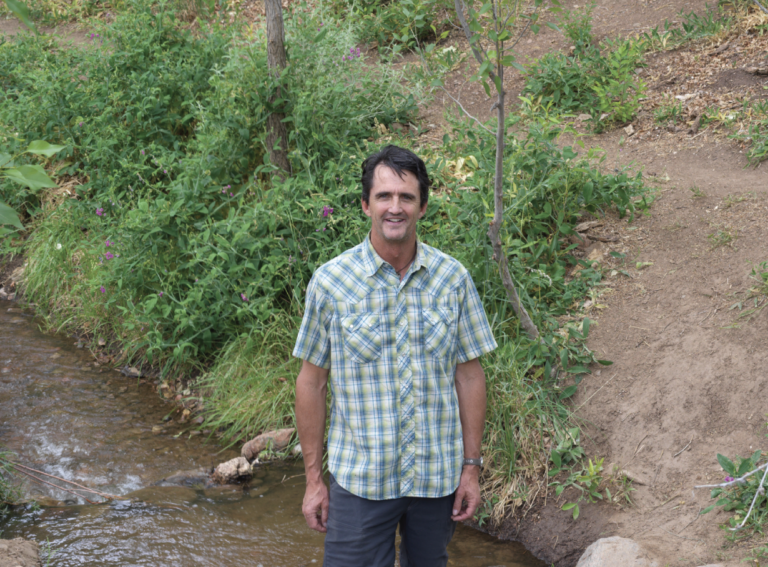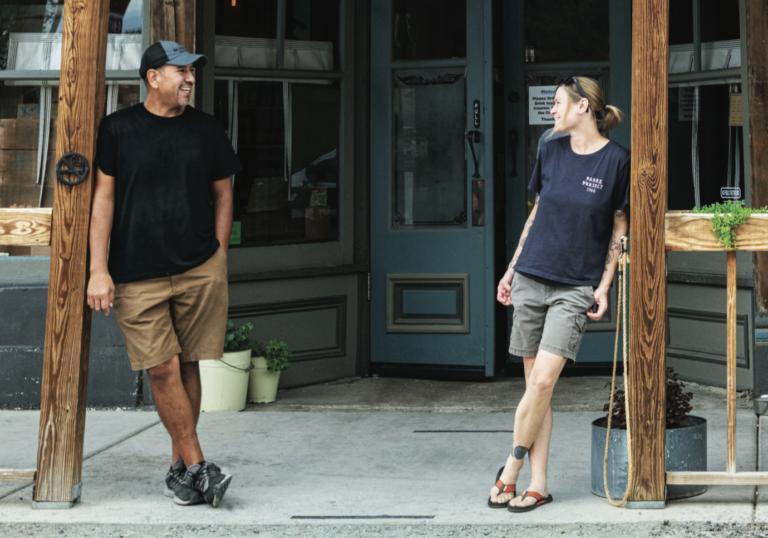MY NEXT DOOR NEIGHBOR can’t eat bread. She is gluten intolerant, which prevents her from enjoying her beloved morning toast. She’s not alone; over two million Americans have some level of gluten intolerance or celiac disease, which interferes with the absorption of nutrients from food, especially gluten in breads.
So imagine her surprise when she ate a piece of Wild Leaven Quinoa and Sunflower Sourdough and experienced zero ill effects. “Magic bread” she now calls it.
What’s the secret? We sat down with Andre and Jessica, co-founders of Wild Leaven, to find out. Turns out it’s about a lot more than baking.
You start with sourdough.
That’s how bread has been made for thousands of years, letting the dough ferment on its own. It’s alive – the sourdough is the culture; it’s the yeast, the relationship between the yeast and the bacteria that are feeding and living and thriving in the dough, multiplying and procreating.
We hear from a lot – a lot – of people who can’t eat bread that can eat this bread. It starts with the quality of the ingredients: the grains and flour are all organic and mostly locally sourced. The majority of wheat products out there are not clean – full of chemicals, pesticides, GMOs, glyphosate residue from Roundup, and worse.
We use organic Southern Colorado quinoa, organic New Mexico Sonora wheat, organic sunflower seeds, organic bread flour, local honey, and organic butter. All clean ingredients that haven’t been messed with, hybridized, or over-processed.
The trick is long fermentation.
Fermenting loaves for 24 hours produces unique flavor and texture and nutritional benefits. After a day of a slow, room-temperature ferment, the sourdough cultures start eating the gluten, carbohydrates, and sugars, releasing beneficial by-products and actually predigesting the bread for you so your gut microbes and body don’t become overworked and out of balance. In the past 15 years, science has shown how hard gluten is to digest if it is not properly fermented, how it can stick to our insides and cause lots of problems.
Studies also show that a 24-hour fermentation is needed to break down anti-nutrients so we can absorb the nutrients in the grain. Anti-nutrients are compounds in the grain which inhibit the absorption of minerals in our bodies. And that’s important because organic grain is packed with essential nutrients and micro-nutrients, that we need to fight off disease and stay healthy.
But this about more than bread.
We have a group of farmers and millers we work with; we are all a link in what we call the Grain Chain. It goes from the plant breeders to the growers to the millers to the bakers, chefs, and brewers, all the way to the consumer, and includes everybody in between.
The food system is as strong as the weakest link. So we really want everyone involved in the process to be recognized and able to make a living at their craft so each link can be strong and able to support itself within the larger chain.
We’ve been working with Big Wheel Farms in Northern New Mexico, small local farmers in Southern Colorado, and the Southwest Grain Collaborative, who are reviving small grain-growing operations in New Mexico. It makes us happy to see that over the past ten years, there’s been a rebirth of grain grown on these smaller scales on family farms across the US.
WANT TO READ MORE? SUBSCRIBE TO SANTA FE MAGAZINE HERE!
Photos SFM








